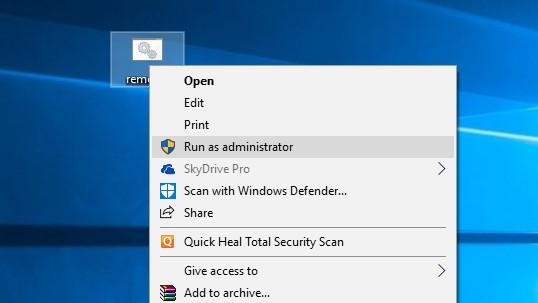

This new way of activating Windows was made available in the latest build released to those testing the OS under the Windows 10 Insider Program. However, this is anecdotal evidence from a single user and there is no guarantee this approach will work for others. I've asked Microsoft to clarify exactly when product keys can be used but have received no response.Īs mentioned, one set of tests has found that Windows 8.1 product keys can activate Windows 10 on a brand new machine that has never had Windows installed on it. What's unclear is what he means by "qualifying devices". In his blog post, Microsoft VP Gabe Aul, says that "if you do a clean install of Windows 10 by booting off the media, you can also enter the product key from prior Windows versions on qualifying devices during setup." What is less clear is what restrictions there will be on using a product key from an older version of Windows to activate Windows 10 on a different machine, which has never run Windows before. Microsoft has confirmed that if you install Windows 10 on a PC that previously ran a genuine copy of Windows 7, 8 or 8.1 that you will be able to use the product key from that earlier operating system to activate Windows 10.


The changes to activation allow the user to simply enter a Windows 7, 8 or 8.1 key to activate a clean install of Windows in many instances. Unfortunately in some instances the system failed to automatically activate Windows 10 and users had to reinstall the old copy of Windows and upgrade to Windows 10 again to get it to activate.įrom the latest build of Windows 10 onwards users should be able to bypass a lot of these issues. If Windows 10 was then reinstalled on the same machine - provided the PC's hardware hadn't significantly changed - it would be matched against this database and the OS would be automatically activated. Once upgraded that PC would be logged in a Microsoft database of computers licensed to run Windows 10. The system required the user to first upgrade a Windows 7 or 8.1 machine to Windows 10. This is significant because earlier builds of Windows 10 would not accept these keys and were activated using an automated system. In tests of the latest preview build of Windows 10, product keys from Windows 7, 8 and 8.1 were successfully used to activate clean installs of Windows 10 - on a machine that previously had Windows installed and on PCs where Windows had never been installed. These changes should make life easier for users of Windows 7, 8 and 8.1 when they upgrade to or reinstall Windows 10. To address these stumbling blocks, Microsoft has simplified the way that Windows 10 is activated - the process of verifying that a copy of Windows is genuine. The process of upgrading to Microsoft's Windows 10 OS has proved anything but straightforward for some users.


 0 kommentar(er)
0 kommentar(er)
